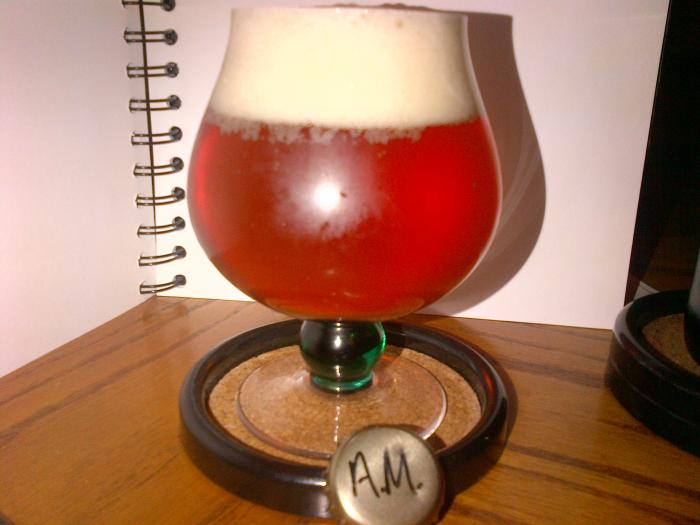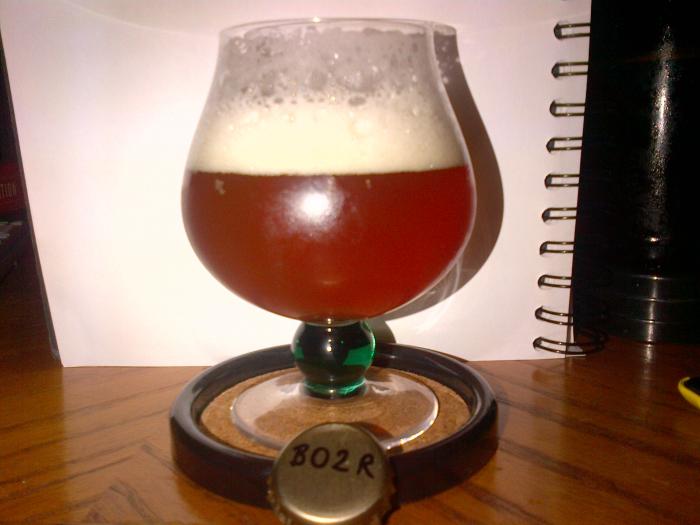Quaker
Beer Missionary
After a couple years in China, where I worked with whatever base malt I could get locally, I was faced with a huge variety of choices coming home. I want to purchase base malt by the sack. Granted I did quite well in China thanks to the generosity and assistance of Mike Jordan, the brewmaster doing great things at Shanghai's Boxing Cat Brewery offering up Weyermann and Castle malts. So I made 6 small batches with 2 lbs each of various base malts.
Much of my gear still hasn't shipped from China yet, so my process was modified for what I have. I love hoppy beers, so I purposely used a hoppy pale ale recipe for comparison. Likely I went too hoppy if only wanting to compare malts, but I'm looking for something that plays well with hops. I do like a good malt base in a pale ale or IPA. I frequently blended some Vienna and/or Munich malt in with my pilsner base malt.
Each recipe was 2 lbs base malt alone
I used 4g Columbus mash hops in each batch
Mashed in a bag with a crock pot
3L strike water and 2L sparge water
Targeted 152, but on a later batch of Saison I discovered my brand new thermometer was almost 10 degrees off. So honestly don't know what I mashed at, but I was consistent.
6 malts were crushed in NB Milwaukee's mill at 0.040
Breiss Organic 2-ro
Belgian Pilsner (I used Castle in China)
Breiss Ashburne Mild
Global Kolsch
Simpson's Golden Promise
Maris Otter
60 minute boil each
No bittering hops other than the mash hops were used
At flameout a blend of 8g Cascade plus 4g each of Columbus, Chinook, Citra, Simcoe, Amarillo
The kettle was placed in a snow bank for 20 minutes so some bitterness would be picked up while cooling.
Then it was racked to a gallon jug and crash cooled in the fridge until the stick-on fermometer read 64.
Each was pitched with a third of a packet of US05.
The variability of gravity results was unexpected. The racked volume varied, but interestingly the higher OG was often the larger volume, so it wasn't due to evaporation rates. You can see from the pre-boil, OG numbers which ones had more evaporation and from the pics the relative volume. It may be due to crush as some kernels are larger than others.
They were brewed on 3/16. Were put in the fridge on 3/27 to crash cool. Bottled direct from primary on 4/14. Got 4x 12 ounce bottles of each except for the Maris Otter and 2-row with only 3 bottles.
Mild pre-boil 1.041, OG 1.058, FG 1.018 (69%AA)
Kolsch pre-boil 1.054, OG 1.080, FG 1.026 (67.5% AA)
2-row pre-boil 1.047, OG 1.065, FG 1.013 (80% AA)
Golden Promise pre-boil 1.048, OG 1.066, FG 1.011 (83% AA)
Maris Otter pre-boil 1.052, OG 1.085, FG 1.018 (79% AA)
Pilsner pre-boil 1.059, OG 1.085, FG 1.020 (76% AA)
At racking, the Maris Otter and the 2-row had a layer of real chunky trub. The others had a fairly dense cake. The Mild had the thickest trub or yeast cake.
I took the OG hydro samples just prior the flameout hops to get a comparison of the malts. I've also tasted them at bottling. I'll wait until I can taste the carbonated samples to post the tasting notes and my final preference. I can say I'm quite happy with the recipe. Quite a tasty, hoppy pale ale. At pitching, the Kolsch was my favorite. At bottling I favored the Pilsner with the Golden Promise a close second. We'll see what the future holds.
Photo of the fermenters

Photo of samples at bottling

I'll post again in about 3 or 4 weeks. I believe on letting beers mature and meld a bit before passing judgement. No rush since my gear win't get shipped until June which means it'll be late sumner before i'm back to a regular brew schedule. I'll include my tasting notes from each stage together with my final results.
Much of my gear still hasn't shipped from China yet, so my process was modified for what I have. I love hoppy beers, so I purposely used a hoppy pale ale recipe for comparison. Likely I went too hoppy if only wanting to compare malts, but I'm looking for something that plays well with hops. I do like a good malt base in a pale ale or IPA. I frequently blended some Vienna and/or Munich malt in with my pilsner base malt.
Each recipe was 2 lbs base malt alone
I used 4g Columbus mash hops in each batch
Mashed in a bag with a crock pot
3L strike water and 2L sparge water
Targeted 152, but on a later batch of Saison I discovered my brand new thermometer was almost 10 degrees off. So honestly don't know what I mashed at, but I was consistent.
6 malts were crushed in NB Milwaukee's mill at 0.040
Breiss Organic 2-ro
Belgian Pilsner (I used Castle in China)
Breiss Ashburne Mild
Global Kolsch
Simpson's Golden Promise
Maris Otter
60 minute boil each
No bittering hops other than the mash hops were used
At flameout a blend of 8g Cascade plus 4g each of Columbus, Chinook, Citra, Simcoe, Amarillo
The kettle was placed in a snow bank for 20 minutes so some bitterness would be picked up while cooling.
Then it was racked to a gallon jug and crash cooled in the fridge until the stick-on fermometer read 64.
Each was pitched with a third of a packet of US05.
The variability of gravity results was unexpected. The racked volume varied, but interestingly the higher OG was often the larger volume, so it wasn't due to evaporation rates. You can see from the pre-boil, OG numbers which ones had more evaporation and from the pics the relative volume. It may be due to crush as some kernels are larger than others.
They were brewed on 3/16. Were put in the fridge on 3/27 to crash cool. Bottled direct from primary on 4/14. Got 4x 12 ounce bottles of each except for the Maris Otter and 2-row with only 3 bottles.
Mild pre-boil 1.041, OG 1.058, FG 1.018 (69%AA)
Kolsch pre-boil 1.054, OG 1.080, FG 1.026 (67.5% AA)
2-row pre-boil 1.047, OG 1.065, FG 1.013 (80% AA)
Golden Promise pre-boil 1.048, OG 1.066, FG 1.011 (83% AA)
Maris Otter pre-boil 1.052, OG 1.085, FG 1.018 (79% AA)
Pilsner pre-boil 1.059, OG 1.085, FG 1.020 (76% AA)
At racking, the Maris Otter and the 2-row had a layer of real chunky trub. The others had a fairly dense cake. The Mild had the thickest trub or yeast cake.
I took the OG hydro samples just prior the flameout hops to get a comparison of the malts. I've also tasted them at bottling. I'll wait until I can taste the carbonated samples to post the tasting notes and my final preference. I can say I'm quite happy with the recipe. Quite a tasty, hoppy pale ale. At pitching, the Kolsch was my favorite. At bottling I favored the Pilsner with the Golden Promise a close second. We'll see what the future holds.
Photo of the fermenters

Photo of samples at bottling

I'll post again in about 3 or 4 weeks. I believe on letting beers mature and meld a bit before passing judgement. No rush since my gear win't get shipped until June which means it'll be late sumner before i'm back to a regular brew schedule. I'll include my tasting notes from each stage together with my final results.









































![Craft A Brew - Safale S-04 Dry Yeast - Fermentis - English Ale Dry Yeast - For English and American Ales and Hard Apple Ciders - Ingredients for Home Brewing - Beer Making Supplies - [1 Pack]](https://m.media-amazon.com/images/I/41fVGNh6JfL._SL500_.jpg)
























